Cooking basmati rice in the Instant Pot is incredibly simple. Here are three methods for achieving perfect results: the Soak Version (recommended), No-Soak Version, and Delay Start Option.
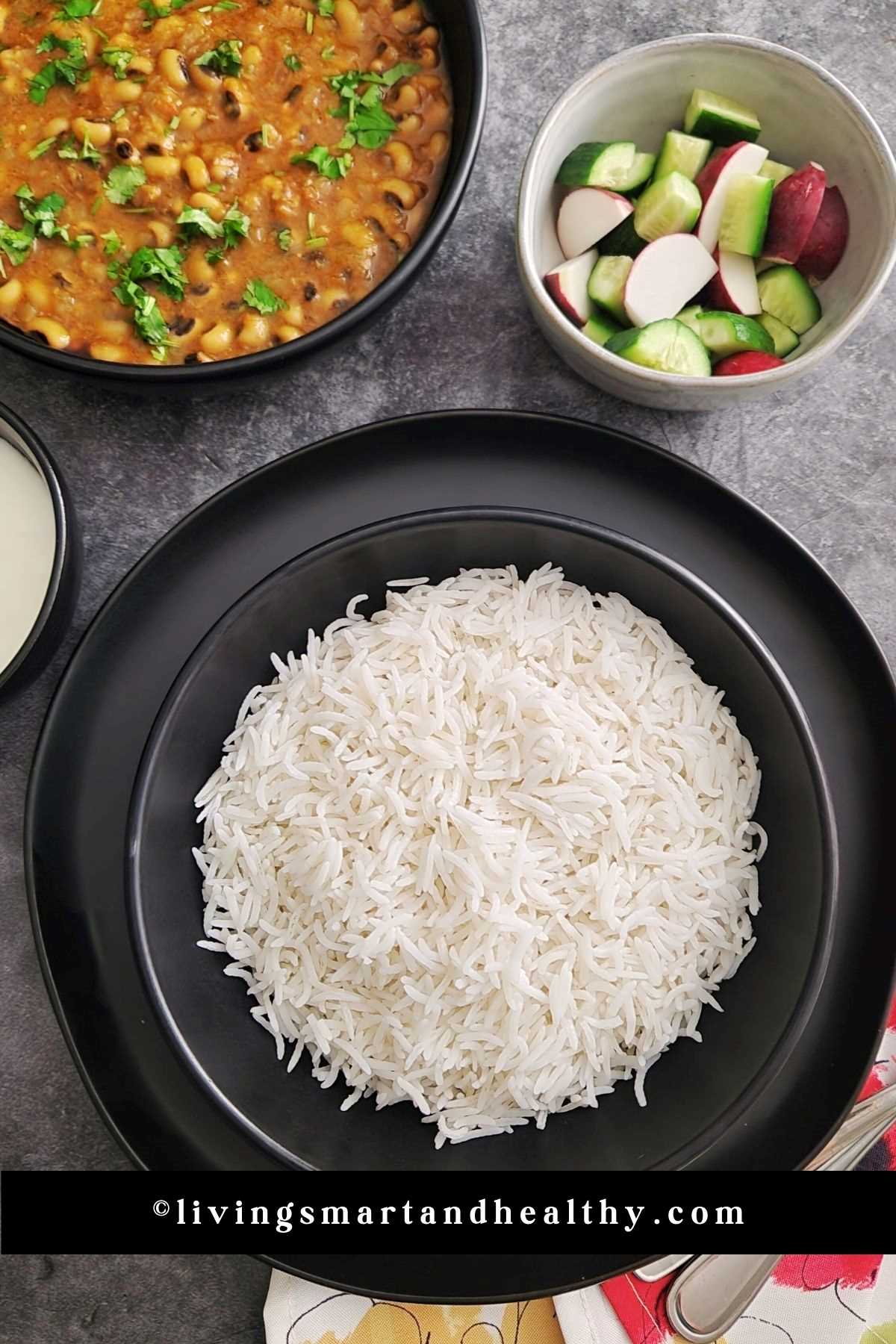
Jump to:
- What is Basmati Rice?
- How to cook Perfect Instant Pot Basmati Rice?
- Cooking Guide to Perfect Instant Pot Rice
- Instant Pot Basmati Rice Recipe
- Tips for perfect Instant Pot Basmati Rice
- Frequently Asked Questions
- Serve Perfect Instant Pot Basmati Rice with:
- How To Cook Basmati Rice In Instant Pot
- Popular Instant Pot Recipes
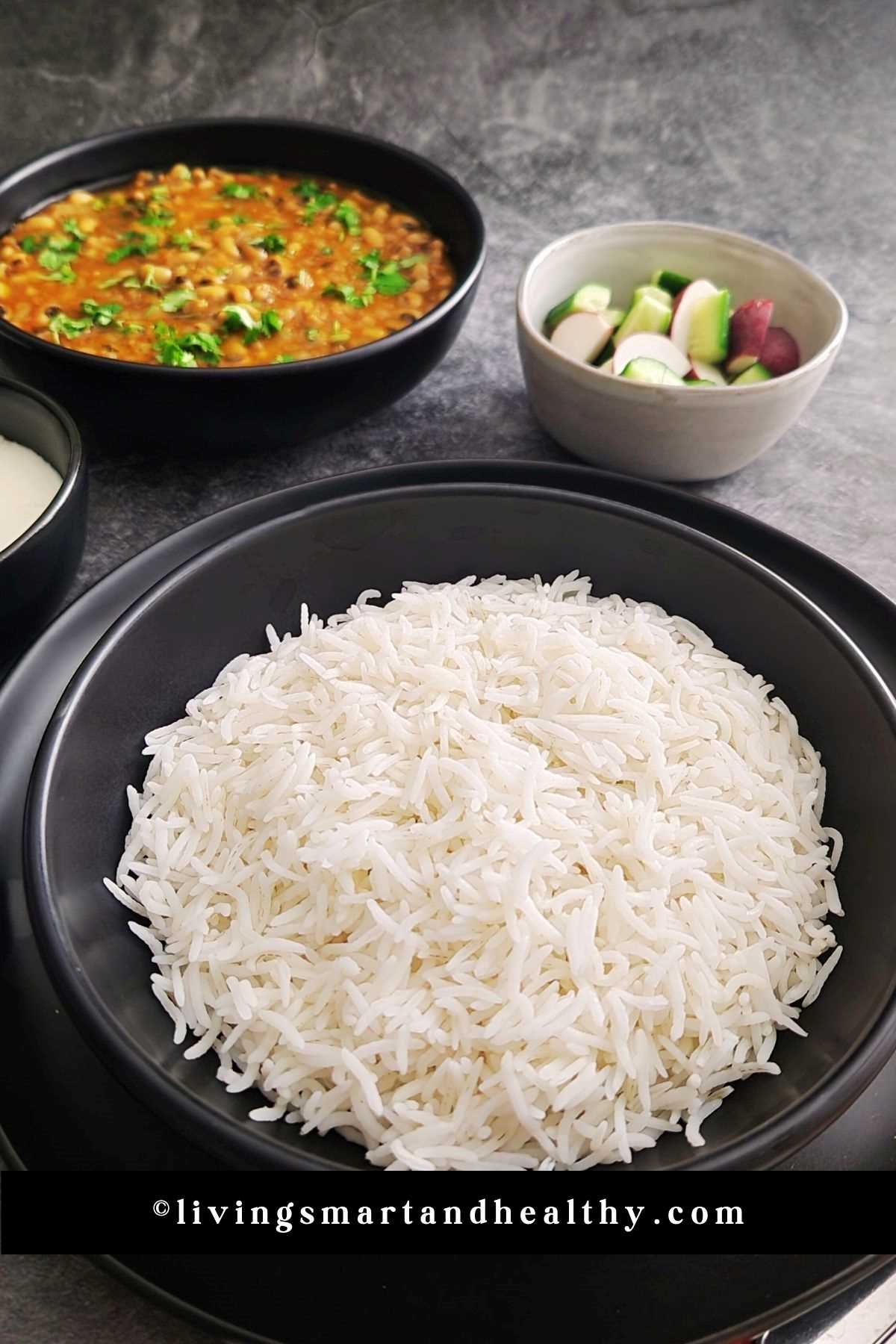
What is Basmati Rice?
Basmati Rice is a variety of long, slender-grained, aromatic rice with slight nutty flavor. Basmati rice is traditionally from Indian subcontinent. This variety of rice has gained popularity all over the world due to its rich, aromatic flavor and taste.
How to cook Perfect Instant Pot Basmati Rice?
Cooking basmati rice is actually quite simple than you may think. Follow few basic steps and you will have perfect basmati rice always. While cooking perfect basmati rice the amount of water and time is quite essential.
I prefer to soak the basmati rice, however you can also make this recipe without soaking the rice. Adjust the amount of water accordingly. Please refer to the cooking guide described later in the post.
Traditionally, when basmati rice is cooked on a stove top, in an open pot, it requires double the amount of water. However in Instant pot, much less water is required to get perfectly cooked rice.
In an open pot the water evaporates quickly, whereas in an Instant pot, the water does not escape due to the closed lid. Thus, the ratio of rice to water will significantly vary in both cooking methods.
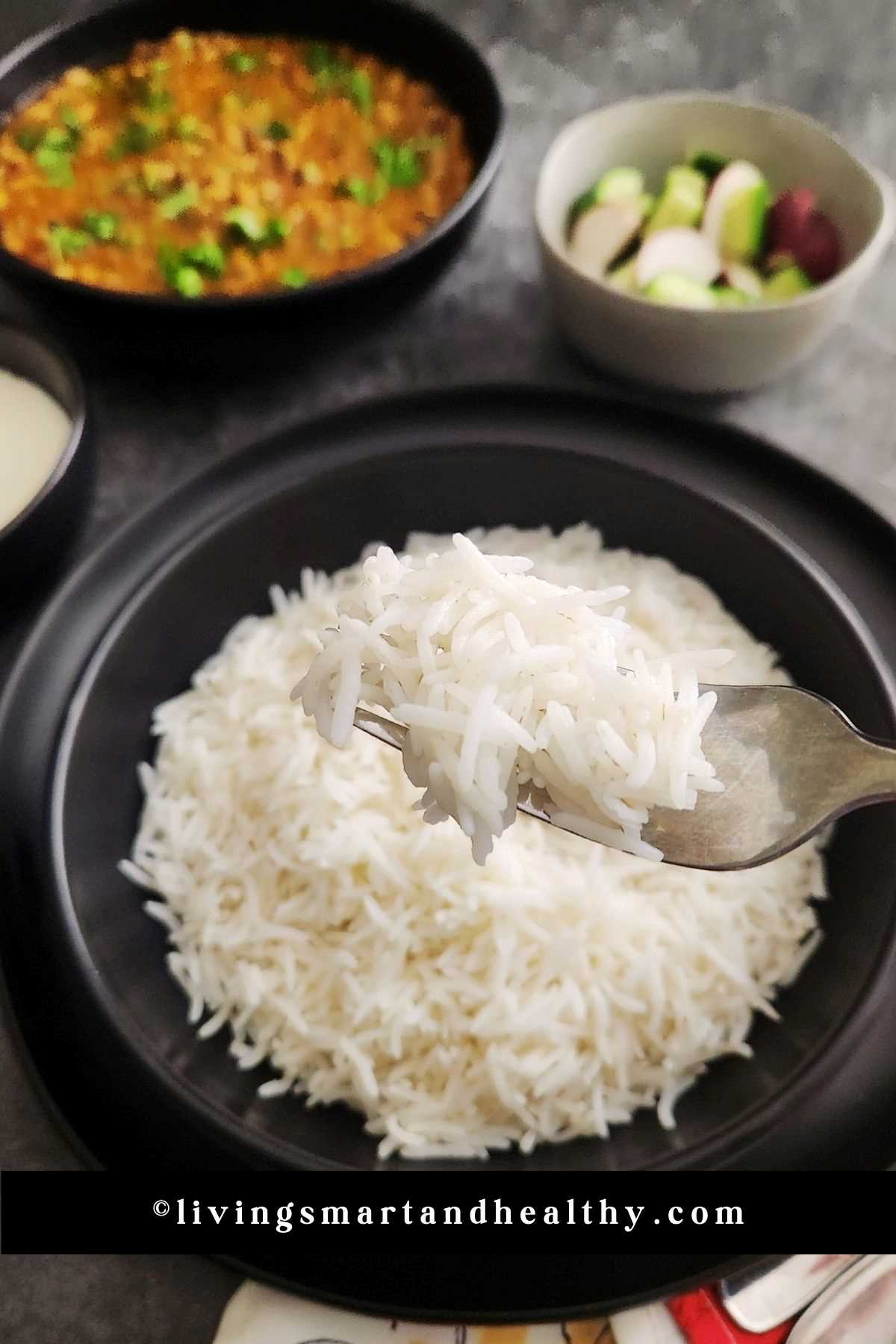
Cooking Guide to Perfect Instant Pot Rice
Important: Turn OFF the "Keep Warm" setting for all options.
| soak (posted in recipe) | no-soak | delay timer | |
| soaking time | 20 minutes up to 1 hour | no soaking | 20 minutes |
| rice to water ratio | 1:1 | 1:1.25 | 1.5:2.25 |
| pressure cook (low-pressure, vent sealed) | 4 minutes | 4 minutes | 4 minutes |
| pressure release (natural pressure release) | 5 minutes | 5 minutes | 5 minutes |
Instant Pot Basmati Rice Recipe
Cooking basmati rice in Instant Pot is so easy. Sharing 3 options for cooking perfect basmati rice in an Instant Pot: Soak Version (preferred option), No-soak version, and Delay Start Option.
Perfect Basmati Rice in Instant Pot (soaking)
Here's a recipe for cooking 1 cup of soaked basmati rice in an Instant Pot:
- Rinse the basmati rice under cold water until the water runs clear. Soak the rice in water for at least 30 minutes, or up to 1 hour. Drain the soaked rice.
- In the Instant Pot, add the soaked and drained rice, water, and a teaspoon of oil or ghee (if using). Season with salt to taste. Note: For 1 cup of soaked basmati rice, add 1 cup of water.
- Close the Instant Pot lid, set the valve to the sealing position, and select the "Manual" or "Pressure Cook" function.
- Set the cooking time to 4 minutes at low pressure for soaked rice.
- Turn OFF the "Keep Warm" setting.
- Once the cooking cycle is complete, allow a natural pressure release for 5 minutes, followed by a quick release for any remaining pressure.
- Carefully open the lid, fluff the rice with a fork, and let it sit for a few minutes before serving.
Enjoy your perfectly cooked, soaked basmati rice from the Instant Pot!
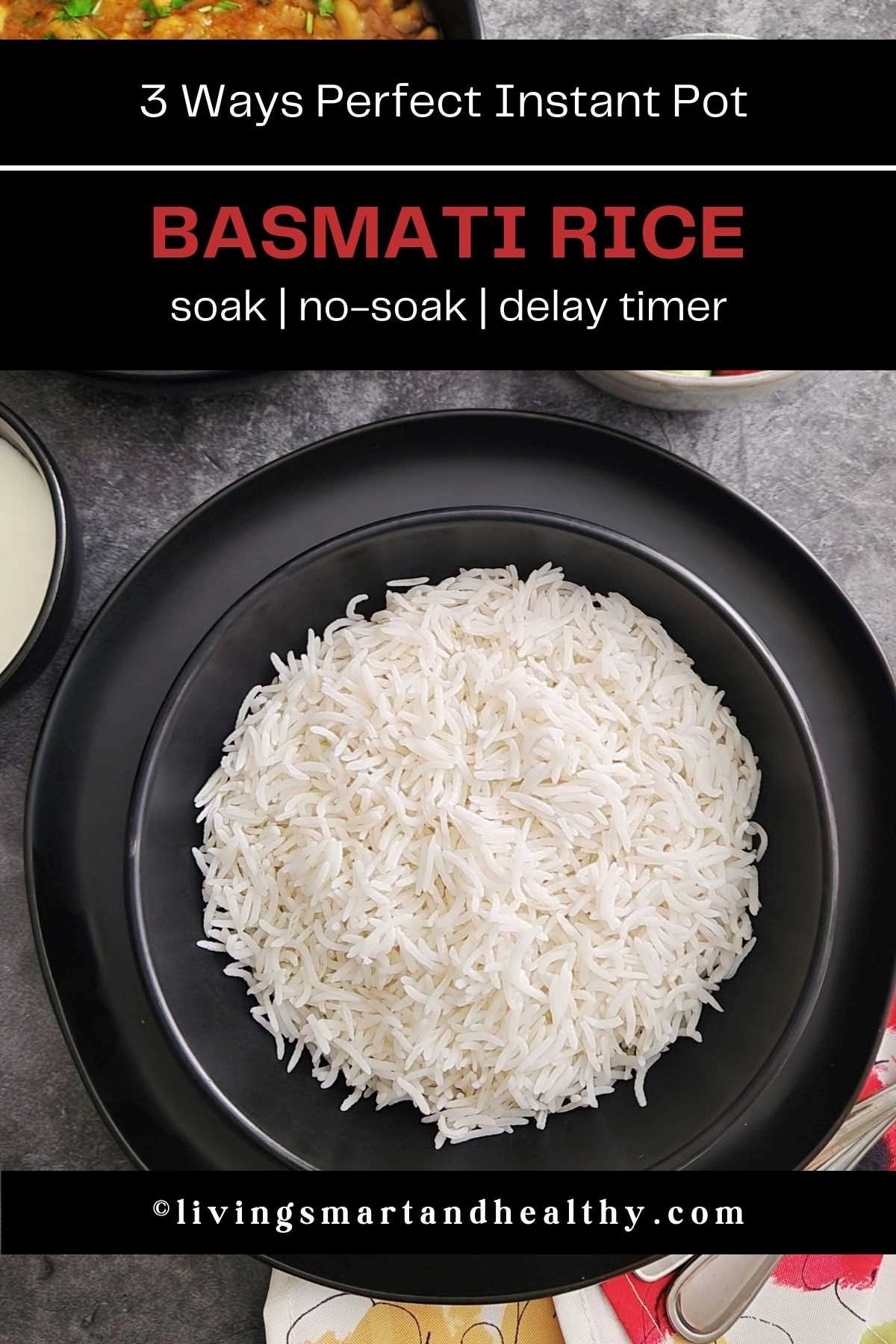
Instant Pot Basmati Rice Recipe (no soaking)
For a no-soak option of cooking 1 cup of basmati rice in an Instant Pot, follow these steps:
- Rinse the basmati rice under cold water until the water runs clear to remove excess starch.
- In the Instant Pot, add the rinsed rice, water, and a teaspoon of oil or ghee (if using). Season with salt to taste. Note: For 1 cup of no-soak basmati rice, add 1:25 cup of water.
- Close the Instant Pot lid, set the valve to the sealing position, and select the "Manual" or "Pressure Cook" function.
- Set the cooking time to 4 minutes at low pressure for perfectly cooked rice.
- Turn OFF the "Keep Warm" setting.
- Once the cooking cycle is complete, allow a natural pressure release for 5 minutes, followed by a quick release for any remaining pressure.
- Carefully open the lid, fluff the rice with a fork, and let it sit for a few minutes before serving.
Enjoy your perfectly cooked, no-soak basmati rice from the Instant Pot!
Perfect Instant Pot Basmati Rice (delay start)
If your Instant Pot has a delay timer feature, you can use it to cook basmati rice. Here's how you can do it:
- Using a fine mesh sieve, rinse the rice under cold running water for couple of minutes or until the water runs clear. Drain the rice well.
- Add 2 teaspoon oil or ghee, rinsed, and drained rice, water, and salt to taste. Mix gently. Close lid, vent sealed. Note: For 1:5 cups of no-soak basmati rice, add 2:25 cups of water.
- Turn ON Pressure Cook (low) 4 minutes, vent sealed, and select "Delay Start" for 20 minutes.
- Note: Turn OFF “keep warm” mode.
- When the instant pot beeps, let the pressure release naturally, around 5 minutes.
- After 5 minutes, release the remaining pressure. Open the lid, fluff the rice with a fork and serve.
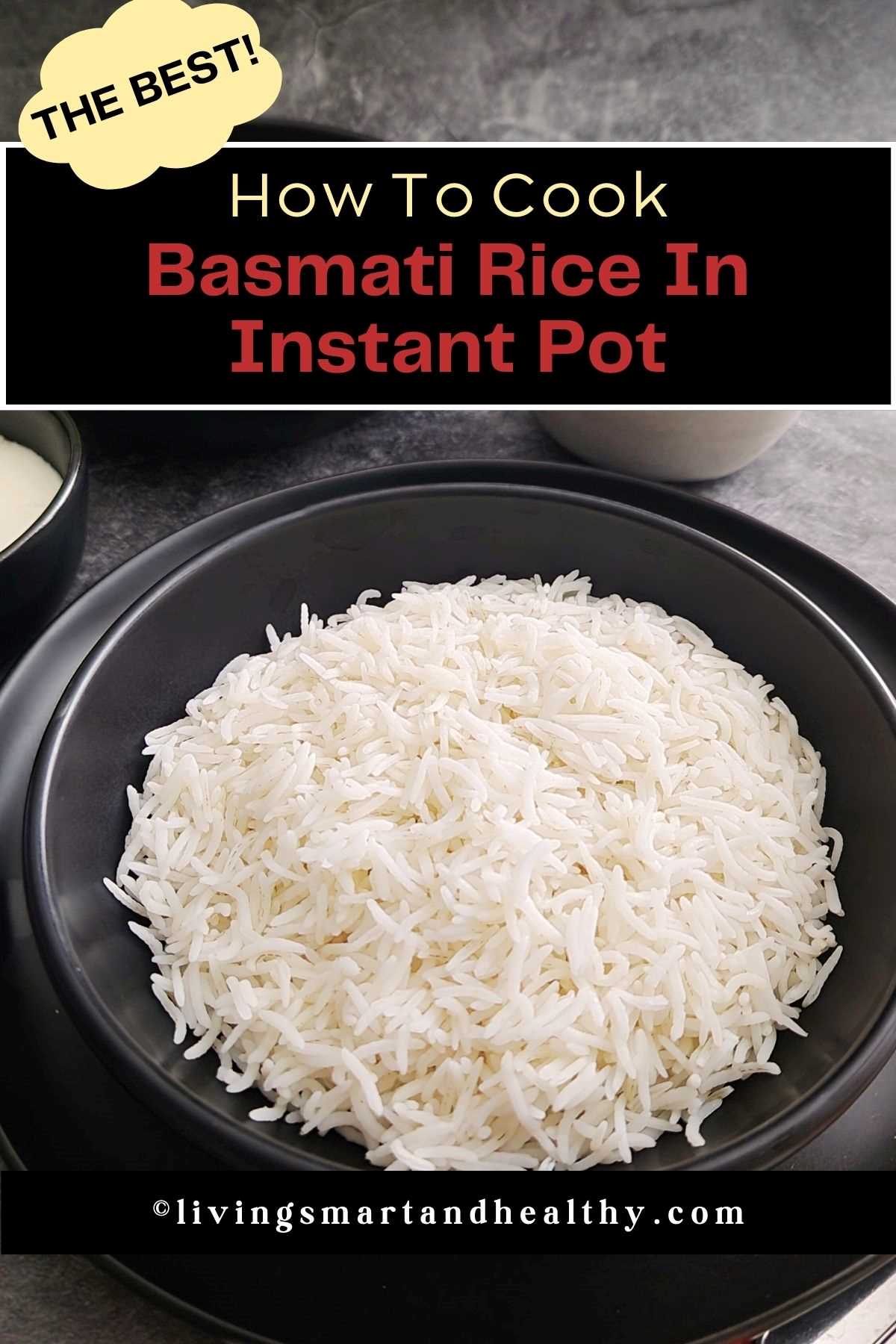
Tips for perfect Instant Pot Basmati Rice
Rinse the rice few times. This helps remove some of the starch, that causes rice to be sticky.
Soak the rice for 20 minutes, adds flavor and texture to basmati rice.
Using some kind of fat such as ghee, butter, or some neutral oil, helps keep grains separate. Oil also acts as a non-stick coating for the inner pot, thus preventing rice from sticking to the bottom of the pot.
Turn OFF the "Keep warm" setting. Leaving the "keep warm" setting ON, makes rice more dry and sticky.
For al dente rice, use less water, and the cooking time will remain the same.
For soft, tender rice add more water, and the cooking time stays the same.

Frequently Asked Questions
Traditionally, basmati rice is soaked prior to cooking for good reasons. One of the main reasons, for soaking the rice is to remove excess starch from the rice. Soaking helps separate the grains and allows for more fluffy, less sticky rice. It also helps, absorb the grains some liquid prior to cooking, thus making them soft from inside out. Basmati rice is a aromatic rice, soaking the rice reduces the cooking time, thus preserving the flavor.
There are several varieties, and different brands of basmati rice to choose from. I buy basmati rice from Costco or local Asian/Indian grocery stores.
I think this is more like a personal preference. For some, al dente rice defines as perfect, whereas for others it might be soft. This is how we like our basmati rice. For me, perfectly cooked basmati rice is non-sticky, separate grains, soft but not mushy, fluffy, and aromatic.
Serve Perfect Instant Pot Basmati Rice with:
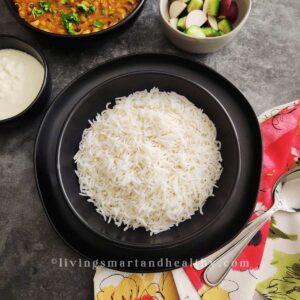
How To Cook Basmati Rice In Instant Pot
Equipment
Ingredients
Instant Pot Basmati Rice Recipe (soaking & no soaking)
- 1 cup Basmati Rice, rinsed and drained
- 1 teaspoon oil or ghee
- 1-1.25 cup water
- 0.25 teaspoon salt, adjust to taste
Perfect Instant Pot Basmati Rice (delay start)
- 1.5 cup Basmati Rice, rinsed and drained
- 2 teaspoon oil or ghee
- 2.25 cup water
- 0.5 teaspoon salt, adjust to taste
Instructions
Perfect Basmati Rice in Instant Pot (soaking)
- Rinse the basmati rice under cold water until the water runs clear. Soak the rice in water for at least 30 minutes, or up to 1 hour. Drain the soaked rice.
- In the Instant Pot, add the soaked and drained rice, water, and a teaspoon of oil or ghee (if using). Season with salt to taste. Note: For 1 cup of soaked basmati rice, add 1 cup of water.
- Close the Instant Pot lid, set the valve to the sealing position, and select the "Manual" or "Pressure Cook" function.
- Set the cooking time to 4 minutes at low pressure for soaked rice.
- Turn OFF the "Keep Warm" setting.
- Once the cooking cycle is complete, allow a natural pressure release for 5 minutes, followed by a quick release for any remaining pressure.
- Carefully open the lid, fluff the rice with a fork, and let it sit for a few minutes before serving.
- Enjoy your perfectly cooked, soaked basmati rice from the Instant Pot!
Instant Pot Basmati Rice Recipe (no soaking)
- Rinse the basmati rice under cold water until the water runs clear to remove excess starch.
- In the Instant Pot, add the rinsed rice, water, and a teaspoon of oil or ghee (if using). Season with salt to taste. Note: For 1 cup of no-soak basmati rice, add 1:25 cup of water.
- Close the Instant Pot lid, set the valve to the sealing position, and select the "Manual" or "Pressure Cook" function.
- Set the cooking time to 4 minutes at low pressure for perfectly cooked rice.
- Turn OFF the "Keep Warm" setting.
- Once the cooking cycle is complete, allow a natural pressure release for 5 minutes, followed by a quick release for any remaining pressure.
- Carefully open the lid, fluff the rice with a fork, and let it sit for a few minutes before serving.
- Enjoy your perfectly cooked, no-soak basmati rice from the Instant Pot!
Perfect Instant Pot Basmati Rice (delay start)
- Using a fine mesh sieve, rinse the rice under cold running water for couple of minutes or until the water runs clear. Drain the rice well.
- Add 2 teaspoon oil or ghee, rinsed, and drained rice, water, and salt to taste. Mix gently. Close lid, vent sealed. Note: For 1:5 cups of no-soak basmati rice, add 2:25 cups of water.
- Turn ON Pressure Cook (low) 4 minutes, vent sealed, and select "Delay Start" for 20 minutes.
- Note: Turn OFF “keep warm” mode.
- When the instant pot beeps, let the pressure release naturally, around 5 minutes.
- After 5 minutes, release the remaining pressure. Open the lid, fluff the rice with a fork and serve.
Notes
- Cooking Guide to Perfect Instant Pot Rice
- Tips For Perfect Instant Pot Basmati Rice
- Frequently Asked Questions
Nutrition
Disclaimer
Nutrition values are my best estimates. If you rely on them for your diet, use your preferred nutrition calculator.







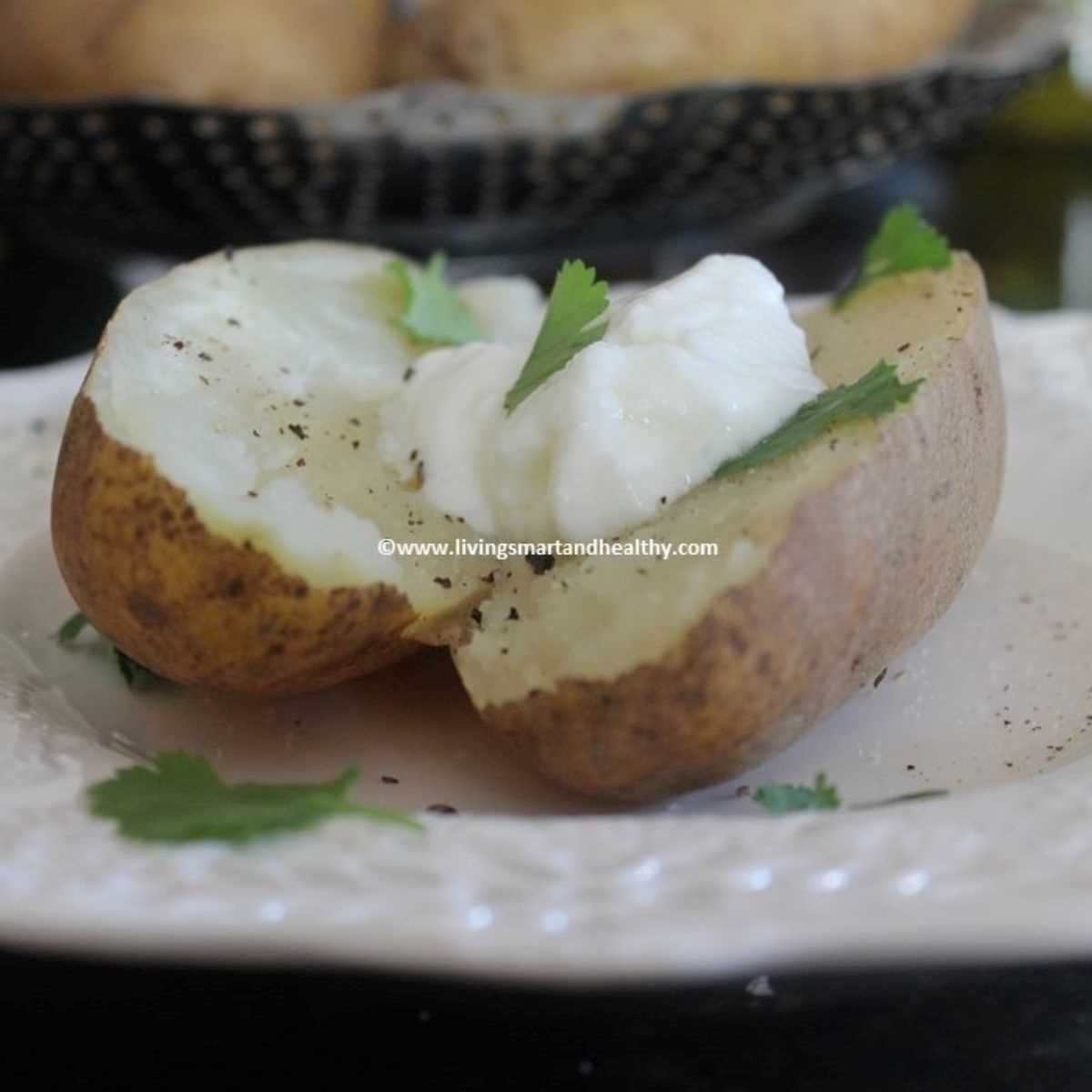
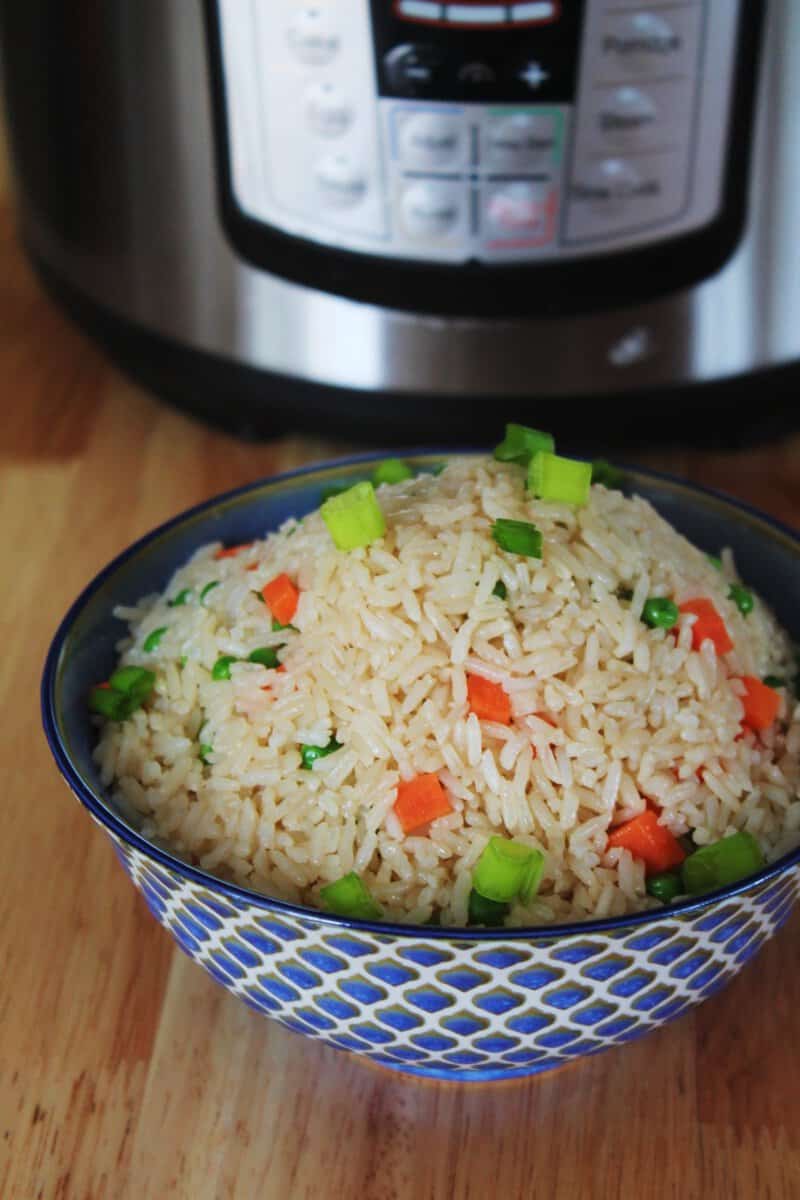



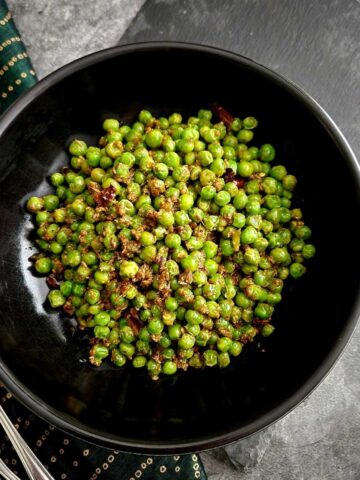
Sandhya says
the basmati rice just came out so perfect.. so grainy, so aromatic and just the way I wanted it.. Thank you so much for this recipe..
Jyoti Behrani says
Great! I am so glad you liked my recipe 🙂